#shed 17 fanart
Explore tagged Tumblr posts
Text
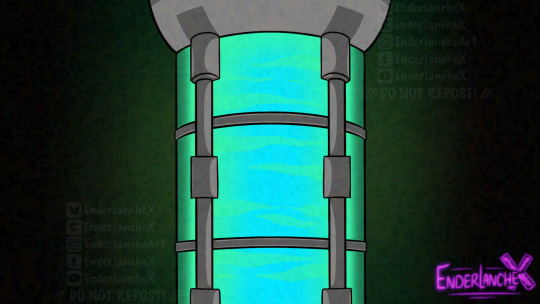
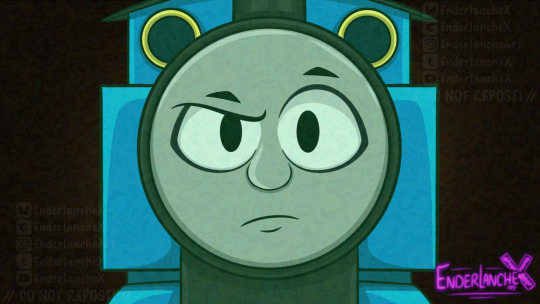

Shed 17 Animation Teaser Images! 😄 (⚠️These images are NOT in order⚠️)
That upcoming animation I mentioned a few posts ago, this is the one..! 😄
I was thinking about making my own fan animation based on a specific scene from Shed 17, ever since I came across a reaction video in January this year! Also, I’ve seen other animators remake this scene in their own style, so I might as well give this a shot! 😁
7 notes
·
View notes
Text
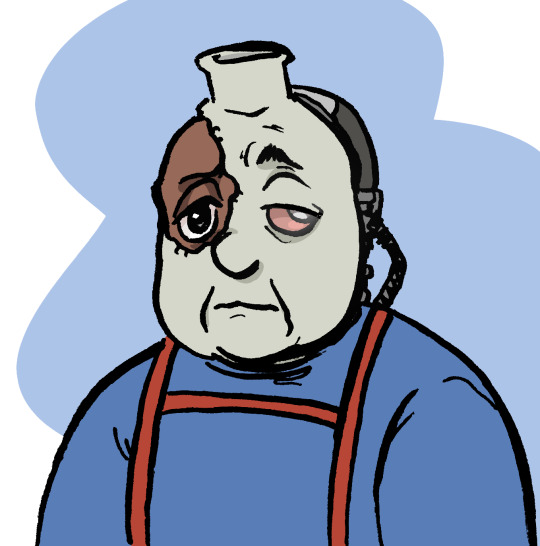
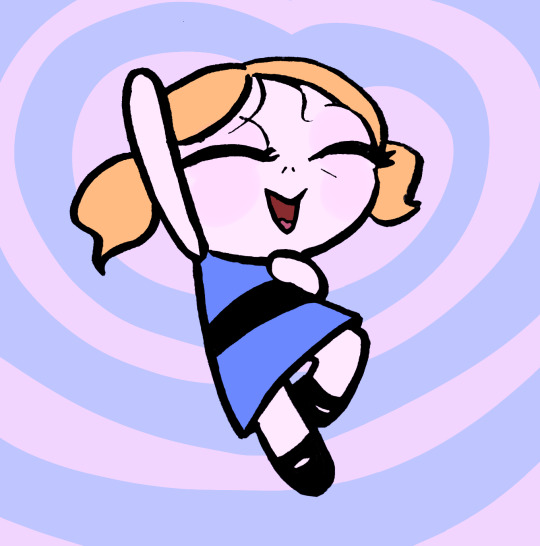
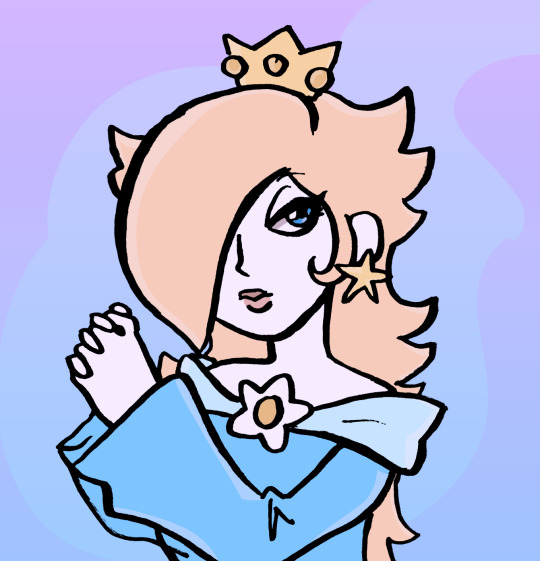
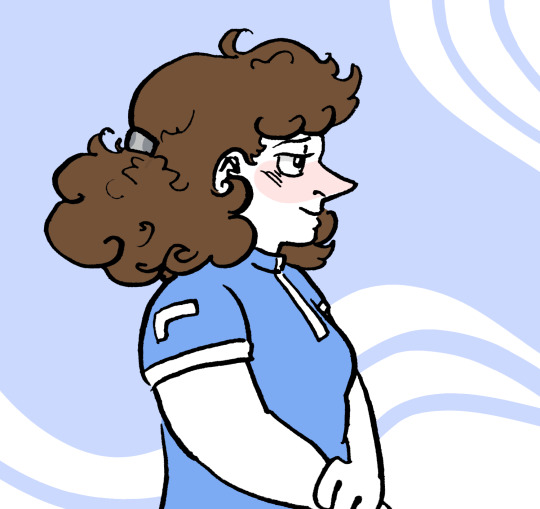
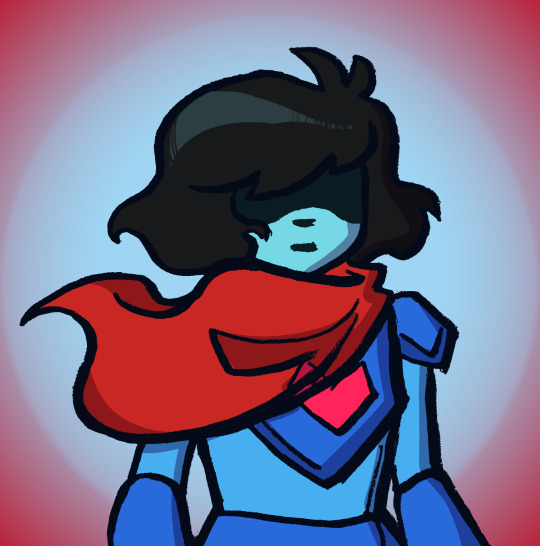
More blue characters
If you see this, please look here:
This campaign has been vetted by association here.
$29,689 / 100k ≈30%
#eye strain#artists on tumblr#gaza mutual aid#vetted#save the children#shed 17#thomas the tank engine#Thomas gotze#project g1#ppg bubbles#powerpuff girls#cartoon network#youtube horror#rosalina#nintendo#mario bros#super mario#miriam kintobor#snively robotnik#sniv's mom#sonic#archie sonic#sonic fanart#sonic the hedgehog#kris dreemurr#deltarune#toby fox#video games#digital art
36 notes
·
View notes
Text


Comic? Choo choo Charles and project G1(Gordon)

What I thought of when I made it: version 1

Version 2
14 notes
·
View notes
Text

Mariana of Austria and Margarita Theresa Fanart
Be warned as some events I wrote had some artistic license.
On the morning of September 17, 1665, the bells tolled throughout the city. Jose Everardo Nithard immediately went to the Queen's chambers. Upon hearing the bells, Queen Mariana awoke and asked what was happening. The courtiers present kissed her hand. Nithard approached her and informed her that the king had passed away. The Queen began to shed a tear but kept her composure. She began to change her wardrobe from extravagant to a simple, rigid mourning dress, with the only adornment on her finger being her wedding ring. Surgeons and attendants were cleaning and embalming the king’s body while a mass was recited at the head of the royal bed. Margarita Theresa, dressed in mourning attire, approached Mariana, hugged her, and wept excessively. Mariana began to cry as she comforted her daughter.
Source: Queen, Mother, and Stateswoman Mariana of Austria and the Government of Spain by: Silvia Z. Mitchell
#I forgot that Felipe's death anniversary was last month#sorry#history#my art#my fanart#historical figures#historical fanart#baroque period#mariana de austria#house of habsburg#habsburg#carlos ii#art#17th century#please like and reblog#spain#mother and child#princess#underrated queen#mourning outfit#tw death#look at them#i love them#they are so cute#ahhhhhh#They are in mourning#so sad </3#margarita maria
71 notes
·
View notes
Text
A small note before Chapter 3 of Everytime it rains
Chapter Two of Everytime It Rains (link HERE if you want to give it a try) was about 15 pages in a Google Doc (Times New Roman, size 11, so realistically closer to 17-18 pages). Right now, I’m working on the first draft of Chapter Three, and I’ve already passed 14 pages. And, well… I’m only halfway through what I’d planned for the chapter. In short, I don’t know if I’ll survive this, but either way, it should be out within 2 days max because I’m forcing myself to finish today, then it’s off to the beta readers for corrections.
Here’s a small reminder or heads-up for those already reading the fanfiction or anyone who might see this and give it a try:
It’s set in the alternate timeline: Shimmer hasn’t been developed.
For consistency, it’s set during Act 1, but everyone’s a bit younger (and the kids are still small) since Act 1 Silco already had his damaged eye.
A third of the fanfiction is medically focused. Some chapters will emphasize procedures because I want to shed light on both Viktor (he’ll appear soon) and Silco, ensuring their conditions feel realistic rather than “fantasy illnesses.” The goal is to explore how proper medical care might have impacted their lives—not to “solve” their conditions but to make them more livable.
On Silco: Since this is before Shimmer, I don’t think he’s entirely “killed the weak man” that he once was. So, if his characterization feels different, it’s intentional. I’m trying to portray him as reserved but more human, closer to the Silco we see on the bridge or in Vander’s memories. No grumpy old man, no threats—this is a Silco who’s already reconciled with himself and with Vander.
There’s fanart of the fanfiction. My beta has already drawn two pages of a comic, and I’ve made posters that tie into the story.
I love interactions. If you want to comment or ask questions, my inbox is open!
#arcane silco#silco fanfic#silco art#silco x reader#silco x you#silco x gn reader#silco#younger silco#young silco#arcane alternate timeline#arcane fanwriting#arcane fanfiction#silco arcane#arcane writing#arcane2#arcane silco art#arcane silco x reader
24 notes
·
View notes
Text

#shed 17#thomas and friends#thomas the tank engine#keith hartley#fanart#project g 1#the meeting is not going well right?#skecht
97 notes
·
View notes
Text
He sighed

#shed 17#shed17#thomas the tank engine#ttte fanart#ttte#ttte humanized#project g-1#paulvids#thomas gotze#maulidsart
112 notes
·
View notes
Note
How does the sodor fallout mutated engine would look like in your AU? (especially Oliver)
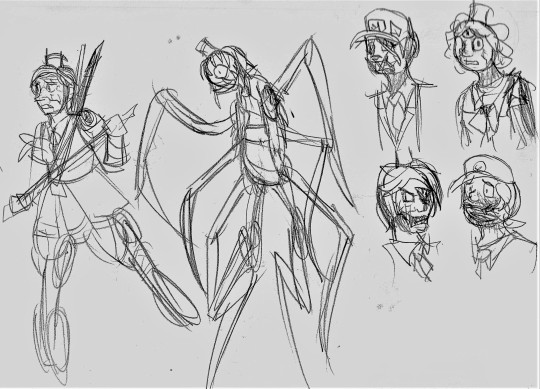
it's unlikely that Sodor fallout could happen in my au since they're only 5% organic it's likely they would only get temporary tumors inside their masks
but let's ignore that for the sake of this
ripped clothes, broken masks, real blood, organic matter growing inside of them all the good jiz
survivor Edward: he tries to survive by taking apart his own engine and using it as aid and weapons to fend off his once friends. but it makes him feel worse every time he does
Oliver the beast: the body around him two times bigger than this humanoid shredding it into pieces only leaving the outer shell.
Sodor fallout isn't my favorite ttte fanfiction but its fun to draw out
#ttte james#ttte humanized#ttte#thomas and friends#thomas the tank engine#ttte edward#ttte fanart#ttte gordon#ttte oliver#ttte percy#ttte thomas#im more of a shed 17 fan since I got my creepy inspiration from that#sodor fallout#tw blood#tw body mutilation
55 notes
·
View notes
Text
P E R C Y

#thomas the tank engine#ttte#ttte percy#ttte humanized#humanisation#shed 17#ttte fanart#ttte human au#thomas and friends#ttte au
155 notes
·
View notes
Link
#mun presents#video#shed 17#project g-1#And congrats to those who made their fanarts into the video#Thomas The Tank Engine#ttte#Thomas and Friends#t&f#yeet
22 notes
·
View notes
Text
Terrifying Discovery //TaF & Paul’s Vids (Jan 6, 2025)
This artwork was mostly inspired off of one scene from a horror Youtube video named Shed 17!
⚠️Shed 17 does contain elements of g0re and other unsettling elements!⚠️
This is the moment when Thomas discovers what was behind the shed’s closed doors, consistently staring at the massive glowing cylinder structure at the opposite end of the train shed.
I’m not good at drawing trains (or any vehicle form), so I just drew him in my own AU version. I did add additional dialogue, to make his reaction more expressive while looking at the massive glowing structure right in-front of him.


Thomas : Thomas and Friends
Reference Image : Shed 17 (Paul’s Vids)
AU Human Model : Mine
App used : Procreate
11 notes
·
View notes
Note
Hello everyone, I am from Gaza. My family suffered a lot, as my father was sick and could not be cured due to the war. He passed away. After that, my family was targeted, where my brother was injured, and his feet and right hand were amputated. Please support my family to survive. Please take a few minutes of your time and read my story.
Donate 20$ and if you can't, share the post
The link is https://gofund.me/363ae8ca
I'm so sorry I've taken so long to answer. I hope this will help your brother get his prosthetics.
This campaign is vetted by association! Link
https://gofund.me/363ae8ca
I'll add images to tag different things:


#gaza mutual aid#save palestine#mr tinker#belle sonic#monster cereals#sonic the hedgehog#idw sonic#dhmis fanart#dhmis red guy#peter lorre#sinestro#thomas and friends#thomas gotze#shed 17#catwoman#batman#thhpii#eraserhead#dhmis yellow guy#king dice#cats#bjork#the maltese falcon#model trains#cuphead#sidney greenstreet#artists on tumblr#eraserhead baby#dr eggman#dr robotnik
18 notes
·
View notes
Text





My first comic!!
SM is my first oc and made me the happiest. This is for warning angst
Idea — the speeches and background scenes came from the possession horror film of 1981
Background — SM couldn't handle seeing one of his own creators other than his main creator, Walter, driving him crazy. They tried hugging him just for him to push them away in a frenzy.
Rushed art, I had to make it under 4 hours and that's why it looks bad
His design came from originally:

#beginners art#SM oc#possession flim of 1981#my ocs#im new to tumblr#fanart#well- self fanart *chuckles*#not fandom related#none of my ocs came from an canon show other then fanarts i made of choo choo charles and other cool characters#like shed 17#one piece#ihnmaims#and more#comic art#etc#explanation#hard sketch#sketch#not finish#oc lore
2 notes
·
View notes
Text

J'ai publié 1 172 fois en 2022
C'est 1 041 billets de plus qu'en 2021 !
199 billets créés (17%)
973 billets reblogués (83%)
Les blogs que j'ai le plus reblogués :
@unwelcome-ozian
@monsterbride99
@feltycartoons
@benjimatorarts
@the-clumsywitch
J'ai étiqueté 1 123 billets en 2022
Seulement 4% de mes billets ne comportaient pas de tag
#astrology - 153 billets
#spideypool - 64 billets
#art - 42 billets
#mob psycho 100 - 42 billets
#wlw - 40 billets
#lesbian - 38 billets
#youtube - 34 billets
#fanart - 33 billets
#wade wilson - 32 billets
#lgbtq - 31 billets
Tag le plus long : 110 caractères
#love the way u drew spidey n how we can definitely tell he isnt going to be looking away anytime soon ahahahah
Mes billets vedette en 2022 :
n°5
Ain't Nothing a little Emerald Dust won't cure! (Black Noir x Genderneutral!Reader)
Black Noir finds himself lost in thoughts and cannot fall asleep. You, as Emerald Dust, a supe that can make people fall asleep with fairy-like dust, helps him out.
****
Black Noir: (Fidjetting on his tatami.)
Y/N: (Sitting next to him.) Earving, you're okay?
Black Noir: (He writes something on his notebook.) I CAN'T STOP WORRYING ABOUT YOU
Y/N: Oh, dear. Why?
Black Noir: YOU ARE NOT AS STRONG AS THE OTHERS
Y/N: I know. But you taught me so well in fighting skills. And without me, the Seven would kill more. Seriously, what is it with Maeve and killing? A little dust of mine would usually do the trick. Also, I am slightly rising in points with the public. I guess you can call selling sleeping pills and herbal teas a good start. Hehe.
Black Noir: (He seems to silently laugh under his mask, then lowers his head.)
Y/N: …Earving? they touch his shoulder
Earving: (He turns around and looks at them…Then…He slowly removes his mask, revealing a pleading right eye. He scribbles a note.) PLEASE USE YOUR POWER ON ME
Y/N: Huh? You want me…to make you fall asleep?
Earving: (Nods more frantically. Then he sheds a tear and hugs them, nesting his face into their belly.)
Y/N: Alright. (stroking his hair and helping him lie down on their lap You're so beautiful. They smile with emotion, then slowly raises their hand above his face. A gentle, slow rain of turquoise dust slowly falls like a mist of rain on his eyes. Y/N takes special care in using their powers at a snail's pace to utterly soothe their sweet raven prince. They begin to sing.)
Go to sleep, the twilight's softly falling
Rest ye well
Beneath the evening star
Troubled hearts, find repose
'Neath the drowsy spell of night
Cares of day, drift away
As the sun sinks out of sight
Go to sleep…
Rest ye well…
Go to sleep…
Go to sleep…
Earving: (As they sing and hum to him, he finds himself slowly turning turquoise in colour, his little cartoon friends nestling in the nook of his arms. He sighs, smiling more and more drunkenly and looking up adoringly at Y/N. He yawns and nuzzles Y/N's belly.)
Y/N: (They smile lovingly and stroke his head, nuzzling his forehead and kissing it, smiling up to their eyes as he completely becomes darkly turquoise. Earving yawns again and smacks his lips together before snuggling his head into their belly more and drifting into a sweet, deep slumber. Rest ye well…) Go to sleep…
(Y/N kisses his head one last time, before shifting so that they are lying down, Earving's head on their stomach and Y/N's arm over his chest and Buster Beaver on top of it.)
THE END
Voir l'intégralité du billet
54 notes - publié le 23 septembre 2022
n°4
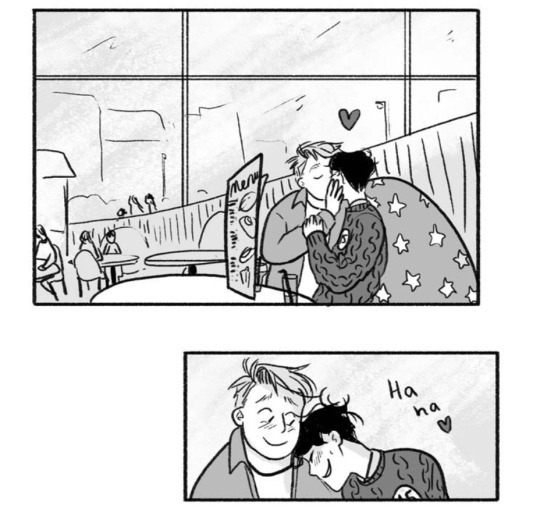
Charlie and Nick being too cute for their own good. Thank you, Alice Oseman, for bringing forth such a lovely, wholesome story!
59 notes - publié le 25 avril 2022
n°3
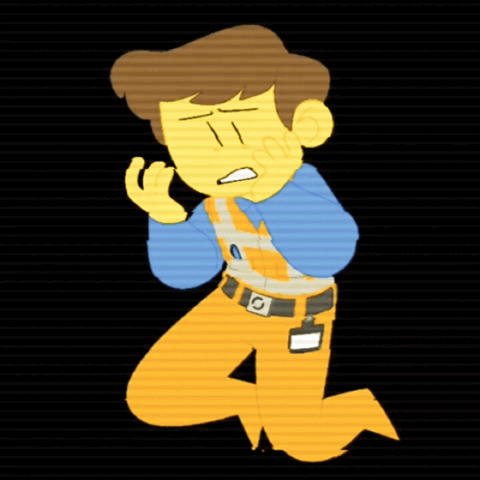
When your shadow self is glitching...
Gif found here: https://www.pinterest.ca/pin/511510470186651700/
77 notes - publié le 9 mars 2022
n°2
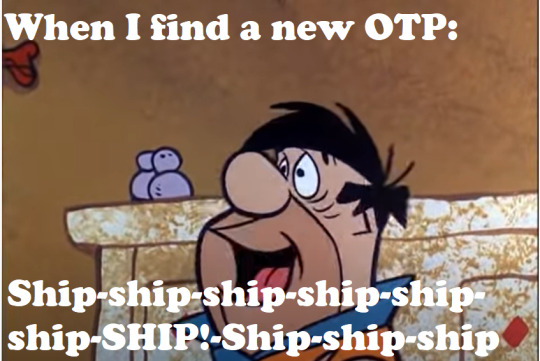
Lookin' at you, Juce, Spideypool and Symbrock. ;-)
Original video: https://www.youtube.com/watch?v=-D50bjRjwHc
86 notes - publié le 17 mars 2022
Mon billet n°1 en 2022
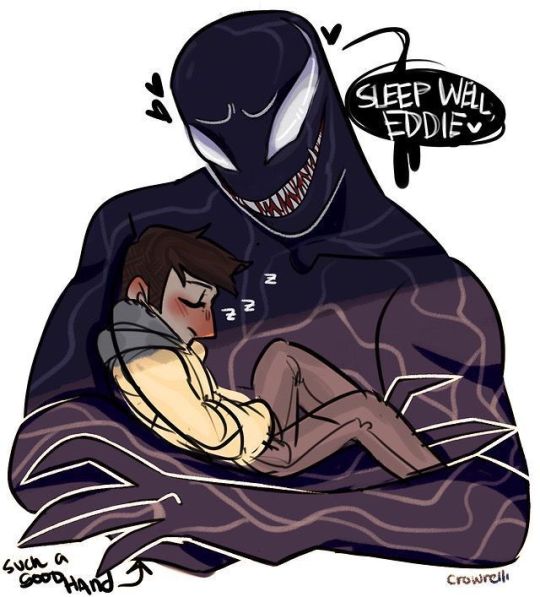
Found this image on Pinterest. I kinda wish Venom would hold little insomniac me, right now. Just like this. Original art by Crowrelli.
363 notes - publié le 8 mars 2022
Obtenez votre année 2022 en revue sur Tumblr →
#tumblr2022#année en revue#mon année tumblr 2022 en revue#votre année tumblr en revue#year in review#my 2022 tumblr year in review#your tumblr year in review
2 notes
·
View notes
Text

I posted 876 times in 2021
212 posts created (24%)
664 posts reblogged (76%)
For every post I created, I reblogged 3.1 posts.
I added 1,178 tags in 2021
#fall out boy - 293 posts
#bandom - 291 posts
#fob - 287 posts
#peterick - 162 posts
#pete wentz - 40 posts
#patrick stump - 30 posts
#meme - 24 posts
#long post - 18 posts
#hgtv verse - 17 posts
#inception - 16 posts
Longest Tag: 110 characters
#part of the reason i deleted my facebook was because they insisted i couldn't have a facebook with a fake name
My Top Posts in 2021
#5
Hi EGT! *waves* I know not to quote you on anything but as a lawyer and a fandom veteran, could you shed any light on the attitude difference between monetizing fanfiction versus fanart? I know it's ALL ILLEGAL, technically. But what's the difference in copyright law for words versus imagery? How do you make art transformative enough to pass muster? (No need to respond if you don't feel like it, I'm just on a research binge and I loved your perspective on the omegaverse case)
Hello!
Okay, yes, first: no legal advice here! This is just some information!
First of all, technically fanart and fanfiction (as I understand those terms to identify) are not necessarily AUTOMATICALLY illegal, even if monetized. Fanart and fanfiction are protected by the fair use doctrine. Fair use is a notoriously unpredictable, fact-specific defense based on a number of factors. One of those factors has to do with transformativeness, as you reference above, so, do you have a different purpose or have you altered the character of the original work. This is why AO3's nonprofit is Organization for *Transformative* Works.
Another of those factors has to do with commercialism, and that's where the monetization comes in. While commercialism is not automatically infringing, uses that are *not* commercial are more likely *not* to be infringing. (The flip side of this is that non-commercialism is not automatically okay, either. There is never anything automatic about copyright fair use. No bright line rules!)
Another factor of the fair use analysis is whether the fanart or fanfic affects the copyright holder's market, which is another question entirely. Commercialism can play into that, but not always.
Okay, so with that as background, a couple of things:
--The attitude difference seems more cultural to me than anything else, at times. Sometimes I think it's even generational? Theoretically, commercialism is taken into account in all fair use analyses. Theoretically, commercial uses are less likely to be considered fair than non-commercial uses (although, again, commercial uses can be fair and non-commercial uses can be infringing). So legally there really is no difference between a fair use art analysis and a fair use fic analysis afa commercialism is concerned; they would both be taken into account. As far as I can tell from my years in fandom, fanartists could monetize more easily, selling at cons, and before the rise of Patreon, etc., fanfiction writers didn't have a clear path to monetization, and so it happened that fandom got more used to the idea that fanartists get paid and fanfic writers don't (this is obviously an extremely broad generalization). But that's just a matter of the way technology developed and not actually a legal statement.
--That said, are there differences in copyright law between words and imagery? Yes. Inevitably. They are different creative media. The same reason why not everybody who writes can draw is the same reason why the law is slightly different between them: they're just two different things. To be clear, the law is the *same,* it's just that in application it's a little different. So, for instance, one of the enduring questions in copyright law is how much a character is copyrightable? Important for fanfiction and fanart, right? Since often they're just borrowing characters? We have a test but the test is different for graphically depicted characters than for characters that only show up in books. And this makes sense, right? Recognizing a character as depicted in a television show is using an entirely different set of signals than recognizing a character you've only ever seen in your mind's eye. So figuring out what makes a character in a television show copyrightable is slightly different than figuring out what makes a character who exists only on a page copyrightable.
--So, finally, how can art be considered transformative? Vs. how can fic be considered transformative? I can't really set out guidelines, because of how finicky fair use is, and also because I don't want anyone to think I'm giving legal advice (I'm not!) and make them think there's some foolproof algorithm to make sure your use is transformative. Analyzing the transformativeness of art vs. text can be a little different, because, again, they're different media. I teach a course on fair use and I actually divide the cases up by creative medium because I think it's interesting to see how it plays out.
The answer ultimately is: It depends. We have a bunch of appropriation art cases, many of them involving Jeff Koons or Richard Prince. In some of these, the courts have found the art transformative, when it recontextualized the art in a new collage, or added some Photoshoppy graffiti over the art. But in others of these, the courts have either found infringement or been dubious about transformativeness, when the art just recreated the original in different colors, or printed the original out with just a caption added. We have fewer cases about text. One of these is the Harry Potter Lexicon case, where the court actually basically found fair use with just a few minor changes to decrease how much of Rowling's text was quoted. There's another one involving a sequel to "Catcher in the Rye" called "Sixty Years Later." The court found it was infringing, not transformative enough of the original because it borrowed too much and didn't change enough. And there's the "The Wind Done Gone" case, which was a retelling of "Gone with the Wind" from the POV of a new enslaved character. The first court thought this was infringing, but the appellate court disagreed and thought it was fair use because it was providing valuable social commentary on "Gone with the Wind" and didn't take more of "Gone with the Wind" than was necessary to make its point.
And it's always important to remember that, as in the "The Wind Done Gone" case, often courts themselves disagree strenuously about fair use. We recently had a big fair use case involving an Andy Warhol painting of Prince, and one court thought it was transformative fair use, and another court thought it was infringing. Such is fair use.
143 notes • Posted 2021-05-21 01:22:32 GMT
#4
A Summary of Our Lives for the Past Year
Science: There's this virus. It could kill you. Even if it doesn't, it could leave you with devastating long-term effects. We don't really know much about it. Be careful.
Many people: I think that virus is fine.
Science: Here is a vaccine that can save your life. We're pretty sure it's perfectly safe and effective. All it will do is protect you from illness.
Many people: I think that vaccine is going to kill me.
145 notes • Posted 2021-04-04 00:59:21 GMT
#3
How's pete genius? Unleashed your thoughts please, I want to hear them as well.
haha WELL
The person I was talking to was speaking from a musical perspective, and I’m not really going to ever win an argument, I don’t think, that Pete’s some kind of bass-playing prodigy, because he knows that he’s not. And the person I was talking to was saying something about, like, Pete Wentz’s mediocrity as a musician and yet him being in a successful rock band and I think that the person’s point was something about the fickleness of fame and success, which I don’t *entirely* disagree with.
But.
I think in Pete Wentz’s case, like, the more I read about and learned about Pete Wentz, the more I became convinced that he wasn’t some guy who happy-go-luckily stumbled upward into fantastic success, and I think that narrative about him is wrong. There’s a way in which it connects back to that whole “boy band” idea of devaluing what “girls” like, you know: Well, Pete Wentz is a good-looking guy and girls went crazy for him so he can’t be that good or smart, he’s just got pretty eyes and a nice smile and hot tattoos. But there’s also a way in which the dominance of “aw shucks it’s all dumb luck” narrative is a strategy in and of itself, letting people underestimate you. But anyway, I’m babbling. What I said to the person that night was:
Pete Wentz might not be a musical prodigy, but Pete Wentz is absolutely a genius. It takes a genius to come up with the strategy Pete did and then to execute it as perfectly as he did: to get their band together, to get their band noticed, to get their band signed. There’s a line in that (otherwise weird) autobiography where someone has a quote about Pete where he used to go around the Chicago scene talking about Fall Out Boy like it was going to be a huge band and that, the way he was about the band, everyone believed him. (Here is a video that talks through Pete’s strategy in a lot more detail.)
Pete talks in interviews about building their fanbase from the ground up, and this is when the internet was still so new that it wasn’t like everyone out there had a Twitter or a TikTok to gain views. What Pete Wentz had was a literal LiveJournal, because he’s got a fannish personality at heart, and that fannish personality meant that he understood what it means for a band to talk to its fans, and the rabbit hole of Pete Wentz’s early interactions with the fans on the FOB message boards was the original thing I loved most about him, when I discovered them on my first day of Googling who Pete Wentz was. There he is just sitting there patiently responding to people writing about their grandmothers dying and their boyfriends breaking up with them, and I’m not saying he’s not a nice guy who genuinely cares about people, but I’m also pretty sure he was performing the emotional labor of building those interactions with an eye on his prize.
Now did he or does he get everything in his life 100% right? No, of course not. But he is an incredibly smart person who was incredibly focused about a very particular ambition at the perfect point in time for him to make it work. He didn’t fall into success, he worked really, single-mindedly, determinedly hard at it. Patrick says somewhere that he’s got to keep an eye on Pete because if he turns away for a second, Pete’s made a million decisions that are going to affect the band for the next five years. Patrick has said somewhere else that the thing that most defines Fall Out Boy is Pete’s taste, which is an unsurprising revelation, as Pete’s been shaping their future for them since the very beginning. One of my very favorite little Fall Out Boy details is that it was Pete who registered their trademark for them originally, with his old AOL email address as the contact, and this is both adorable to me and also so smart, he did it SO EARLY.
And then he did exactly what he should have done and transferred it to the band’s LLC when they were big enough to get one, which warms my heart.
Pete is very clearly a writer, and I could have talked about that, about how he obviously writes compulsively in that way of people who need words. I could have talked about how he’s been a writer his whole life, how his dad has talked about how important books are to him and how he was writing his own in elementary school. I could have talked about what a *good* writer he is, too, how his lyrics are densely packed with layers of meaning.
But Pete didn’t just write books in elementary school: he also went around selling them door to door. His entrepreneurial streak has always been there. He understands marketing and thinks about it deeply. He is, as he proclaimed once in an interview, not stupid.
In the end, though, here’s how you know Pete Wentz is a genius: He met this teenage drummer who *was* a musical prodigy, and he saw immediately what he had stumbled onto and he held on tight. Meeting Patrick Stump was luck. Convincing Patrick Stump to sing in his band, that was Pete’s first act of genius.
213 notes • Posted 2021-05-06 02:25:03 GMT
#2
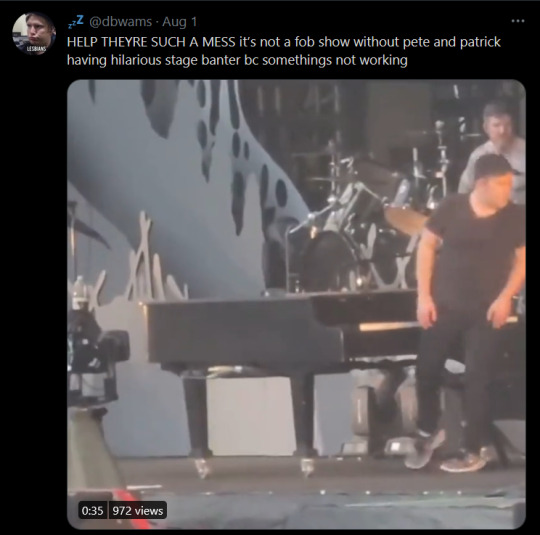
HELP THEYRE SUCH A MESS it’s not a fob show without pete and patrick having hilarious stage banter bc somethings not working pic.twitter.com/3COtWQqJAS
“Hey, so, you know your great idea to set the piano on fire every night?”
“GREAT idea.”
“Yeah. Now half the keys don’t work.”
“Huh.”
“Yeah.”
“Do you need all the keys?”
“YES.”
“...You don’t think that setting the fire on piano every night could, like, affect the piano, do you?”
“YES. I DO.”
“My bass is fine...”
“IS IT, THOUGH?”
289 notes • Posted 2021-08-03 00:57:16 GMT
#1
Heyyyyyy, I bet you were DYING to know stuff about that Google v. Oracle decision, huh?
You may have heard recently about a big deal Supreme Court decision called Google v. Oracle, a litigation that has dragged on for many, many, many years and focuses on Google having copied some pieces of computer programming owned by Oracle and known as APIs. Most of the write-ups I’ve seen about it have focused on its enormous repercussions for the technology sector, which makes sense since it’s a case about computer programming and APIs and other tech-y things.
But the thing about the decision is that it’s a fair use decision. The Supreme Court could have found that the APIs weren’t even protected by copyright. But instead, the Supreme Court used the doctrine of fair use, and this means that the case potentially has ramifications for all fair use situations, including fanfiction!
So, if you don’t know, fair use is a main defense to copyright infringement. Basically, you can use somebody else’s copyrighted work without their permission as long as what you’re doing with it is considered a “fair use.” E.g., you can write a story in somebody else’s fictional universe or draw art of somebody else’s fictional copyrighted characters without their permission as long as your use is a “fair use.”
“What’s a fair use?” is an incredibly complicated question. The long and tortured history of Google v. Oracle illustrates this: a jury found Google’s use was a fair use; an appellate court found that it wasn’t and basically said the jury was wrong; and now the Supreme Court says no, no, the jury was right and the appellate court was wrong. Like, this is not unusual, fair case rulings are historically full of disagreements over the same set of facts. All of the cases reiterate over and over that it’s a question that can’t really be simplified: every fair use depends on the particular circumstances of that use. So, in a way, Google v. Oracle, like every fair use case, is a very specific story about a very specific situation where Google used very specific APIs in a very specific way.
However, while every fair use case is always its own special thing, they all always debate the same four fair use factors (these are written into the law itself as being the bare minimum of what should be considered), and especially what’s known as the first and fourth factors. The first factor is formally “the purpose and character of the alleged fair use,” although over the decades of fair use jurisprudence this has come to be shorthanded as “transformativeness,” and the fourth factor is “effect on the market.”
Most of the energy and verve of a fair use case is usually in the transformativeness analysis; the more transformative your use is, the more likely it is to be fair (this is why AO3’s parent organization is called the Organization for *Transformative* Works – “transformative” is a term of art in copyright law). To “transform” a work, btw, for purposes of copyright fair use doesn’t necessarily mean that you have edited the work somehow; you can copy a work verbatim and still be found transformative if you have added some new commentary to it by placing it in a new context (Google Image Search thumbnails, while being exact reproductions of the image in question, have been found to be fair use because they’re recontextualizing the images for the different purpose of search results). The point is, transformativeness is, like fair use itself, built to be flexible.
Why? Because the purpose of copyright is to promote creativity, and sometimes we promote creativity by giving people a copyright, but sometimes giving someone a copyright that would block someone else’s use is the opposite of promoting creativity; that’s why we need fair use, for THAT, for when letting the copyright holder block the use would cause more harm to the general creative progress than good. Google v. Oracle recommits U.S. copyright to the idea that all this is not about protecting the profits of the copyright monopolist; we need to make sure that copyright functions to keep our society full of as much creativity as possible. Google copied Oracle’s APIs to make new things: create new products, better smartphones, a platform for other programmers to jump in and give us even more new functionality. The APIs themselves were created used preexisting stuff in the first place, so it’s not like anyone was working in a vacuum with a wholly original work. And, in fact, executives had thought that, the more people they could get using the programming, the better off they would be.
Which brings us to the fourth fair use factor, effect on the market (meaning the copyright holder’s market and ability to reap profits from the original work). There’s a lot of tech stuff going on in this part of the opinion but one of the points I find interesting from that discussion is that the court thought that Google’s use of the APIs was not a market substitute for the original programming, meaning that Google used the APIs “on very different devices,” an entirely new mobile platform that was “a very different type of product.”
But also. What I find most interesting in this part is the court’s explicit acknowledgment that sometimes things are good because they are superior, and sometimes things are good because people “are just used to it. They have already learned how to work with it.” Now, this obviously has special resonance in the tech industry (is your smartphone good because it’s the best it could be, or because you’re just really used to the way it’s set up?), but there’s also something interesting being said here about how not all of the value of a copyrighted work belongs *to the copyright holder* but comes *from consumers.* Forgive the long quote but I think the Court’s words are important here:
“This source of Android’s profitability has much to do with third parties’ (say, programmers’) investment in Sun Java programs. It has correspondingly less to do with Sun’s investment in creating the Sun Java API. . . . [G]iven programmers’ investment in learning the Sun Java API, to allow enforcement of Oracle’s copyright here would risk harm to the public. . . . [A]llowing enforcement here would make of the Sun Java API’s declaring code a lock limiting the future creativity of new programs. Oracle alone would hold the key. The result could well prove highly profitable to Oracle . . . . But those profits could well flow from creative improvements, new applications, and new uses developed by users who have learned to work with that interface. To that extent, the lock would interfere with, not further, copyright’s basic creativity objectives.”
This is picking up on reasoning in some older computer cases (like Lotus v. Borland, a First Circuit case from decades ago), but I think it’s so important we got this in a Supreme Court case: if WE bring some value to the copyrighted work through our investment in it, why should the copyright holder get to collect ALL the rewards by locking up further creativity involving that work? Which, incidentally, the Court explicitly notes is to the public detriment because more creativity is good for the public? This is such an important idea to the Supreme Court’s reasoning here that it’s the first part of the fair use test that it decides: that the value of the work at issue here “in significant part derives from the value that those who do not hold copyrights . . . invest of their own time and effort . . . .”
This case is, as we say in the law, distinguishable from fanfiction and fanart. APIs are different from television shows, and this case is very much a decision about technology and computer programming and smartphones and how old law gets applied to new things. Like, fair use is an old doctrine dating from the early nineteenth-century, and here we are figuring out how to apply it to the Android mobile phone platform. That, in and of itself, is pretty cool, and it’s rightly what most of the articles you’ll see out there about this case are focusing on.
But this case isn’t just a technology case; it’s also a fair use case that places itself in the lineage of all the fair use cases we look at when we think about what makes a use fair. And, to that end, this has some interesting things to say, about how much value consumers bring to copyrighted works and where a copyright holder’s rights might have to acknowledge that; about the fact that there are in fact limits to how much a copyright holder can control when it comes to holding the “lock” to future creativity building on what came before; about what part of the market a copyright holder is entitled to and what it isn’t. Think about the analogy you could make here: Given the investment of fans in learning canon, which is what makes the creative work valuable in the first place, allowing enforcement against fanfic or fanart would allow the canon creators to have a lock limiting future creativity, which would be highly profitable to the original creator (or, let’s be real, to Disney lol), but wouldn’t further copyright’s goals of promoting creativity because it would stifle all of that creativity instead. And just like Google with the APIs, what fandom is doing is not a market substitute for the original work: they’re “very different products.”
This is not to say, like, ANYTHING GOES NOW. Like I said, fanfic and fanart are very different from APIs. Fictional works get more protection than a functional work like the APIs at issue in this case. And there’s still a whole thing about commercial vs. non-commercial in fair use analysis which I didn’t really touch here (but which obviously has limits, since it’s not like Google isn’t making tons of money, and their use was a fair use). But this decision could kind of remind a big media world that maybe had forgotten that the copyright monopoly they enjoy is supposed to have the point of encouraging creativity; we grant a copyright because we think people won’t create without a financial incentive. (Tbh, there’s a lot of doubt that that is actually a true thing to believe, given all the free fic and art that gets produced daily, but anyway, it’s what the law decided several centuries ago before the internet was a thing.) Copyright is a balance, between those who hold the copyright and the rest of us, and the rest of us aren’t just passive consumers, we have creative powers of our own, and we might also want to do some cool things. And this case sees that. None of us are starting in a creative vacuum, after all; we’re all in this playground together.
424 notes • Posted 2021-04-09 19:34:27 GMT
Get your Tumblr 2021 Year in Review →
12 notes
·
View notes

